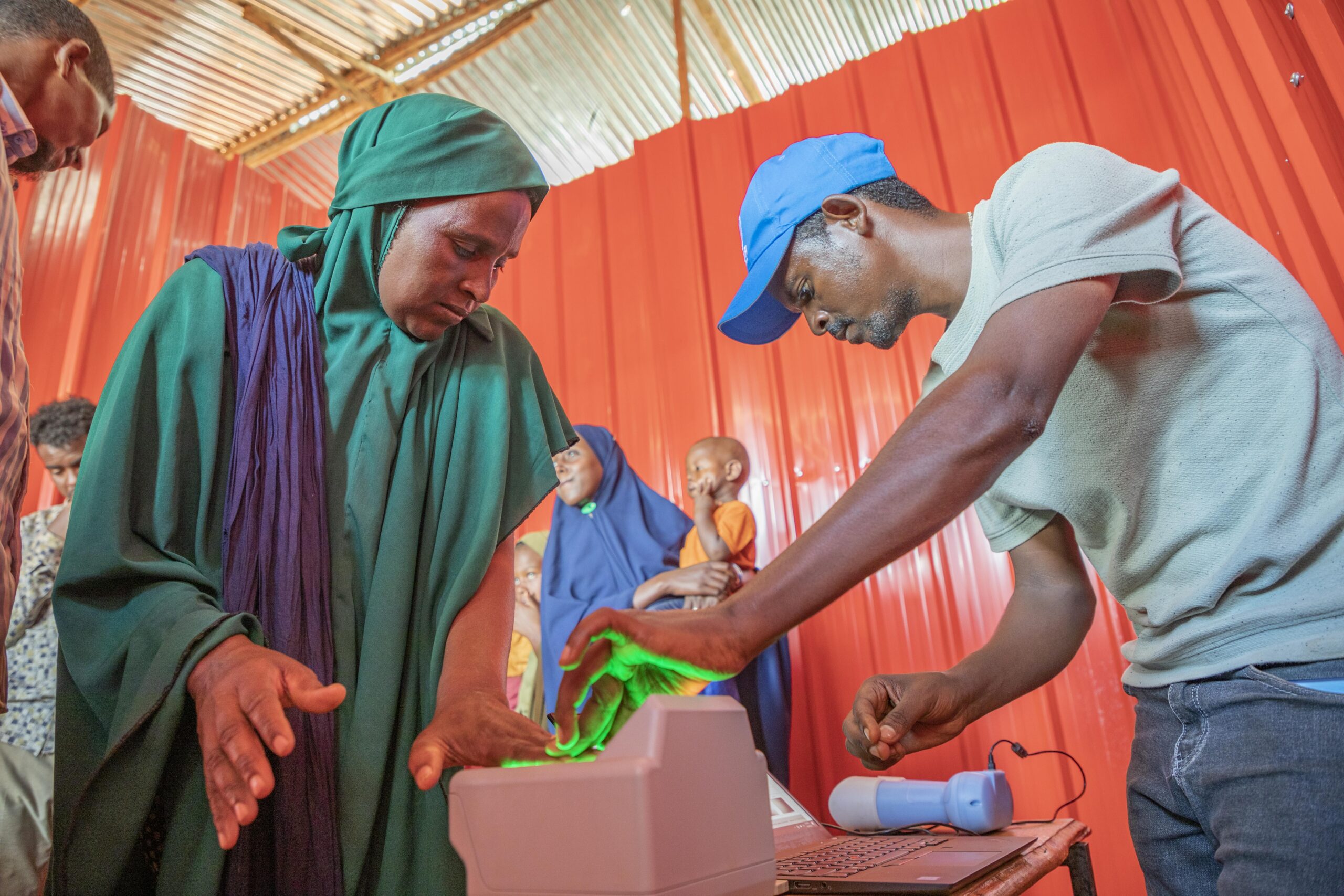
Zeynab Yusuf Khaluf, 32, gets her prints taken during registration. © UNHCR/Diana Diaz
By Axel Haberkorn and Sam Jefferies
UNHCR, the UN Refugee Agency, uses a Biometric Identity Management System – or BIMS for short – for biometric enrolments of people forced to flee. It is our primary biometric system within our registration and identity management ecosystem and used in countries across the world. To biometrically enroll refugees, BIMS captures both fingerprint and iris images as well as a facial photograph. This data is stored in a centralized, consolidated database, ensuring a globally unique identity for every refugee.
BIMS deployments
Chile and Panama are the latest countries to join UNHCR’s BIMS family. In Chile, three trainings were held over a period of three weeks in Santiago de Chile, Iquique and Arica with over 60 partner and UNHCR staff attending. The purpose of registration in the South American country is mostly case management and assistance. Hence, biometric enrolment is used to establish unique registered identities, improve operational capacities and data integrity, enhance the identification of individuals and prevent misrepresentation.



Photos: (Left/Centre) Participants of the BIMS training in Santiago de Chile during hands-on exercises with iris and fingerprint scanners. (Right): A UNHCR field staff doing biometric enrolment as part of registration of specific needs for referral to partners at the reception centre in Lobito, in the Tarapacá region. © UNHCR/S. Tholozan
Four implementing partners (Servicio Jesuita a Migrantes, World Vision International Chile, La Vicaría de la Pastoral Social, and Colectiva Manifiesta), who undertake the majority of registration activities, are the main BIMS users in Chile. To ease the new users into using the tool in a region, which is historically hesitant to utilize biometrics, UNHCR will only biometrically enroll individuals older than 18 years until the end of 2023. This would target approximately 25,000 individuals based on 2022 figures. For 2024, the advice is to move to the
BIMS was also successfully deployed in Panama this year. In early February, the Multi-Country Office there conducted a BIMS and registration training for ten staff members of UNHCR’s partner organization Panamanian Red Cross who assist UNHCR Panama in the registration of persons forced to flee.
Currently, biometric enrolment supports the registration and identity management processes in the operation, where most of asylum-seekers and refugees come from Nicaragua, Venezuela, and Colombia. Once more than 60% of the targeted population of approximately 3,700 persons has been enrolled, cash delivery will be supported through biometric verification.
The Use of the Global Distribution Tool (GDT) for Resettlement Processing
While BIMS is UNHCR’s primary biometric system, the Global Distribution Tool (GDT) is a web-based and biometric-enabled tool. This means it is integrated with BIMS to perform biometric verification but does not hold any biometric data itself. Furthermore, it allows users to generate lists of assistance distribution (e.g., cash assistance) and track the admission, verification, and collection of assistance by persons forced to flee and who have registered with UNHCR. The GDT plays an especially crucial role in ensuring a smooth and efficient resettlement process as the identity of beneficiaries is verified using both GDT and BIMS.
Since the beginning of the year, three training sessions in the use of the GDT were held in the West and Central Africa, Asia and the Pacific, and Middle East and North Africa Regions. The objective was to enable UNHCR colleagues and partners to create a list of specific cases submitted to the US for resettlement, which the Resettlement Support Centers (RSCs) use to verify the identity of the refugees at the pre-screening stage. The trainings targeted specifically Resettlement and Data Management staff as well as RSC associates and reached almost 100 people. In the end, they proved to be successful in providing participants with a comprehensive understanding of the GDT and its role in the identity verification for the resettlement process.
GDT and BIMS are only two tools in a range of applications UNHCR uses to carry out its mandate to protect and serve people forced to flee. In the area of biometrics specifically, a lot of new developments are taking place and UNHCR is keeping abreast with innovation in the field. The aim is always to provide effective protection and assistance, while ensuring any data-related concerns are adhered to.
